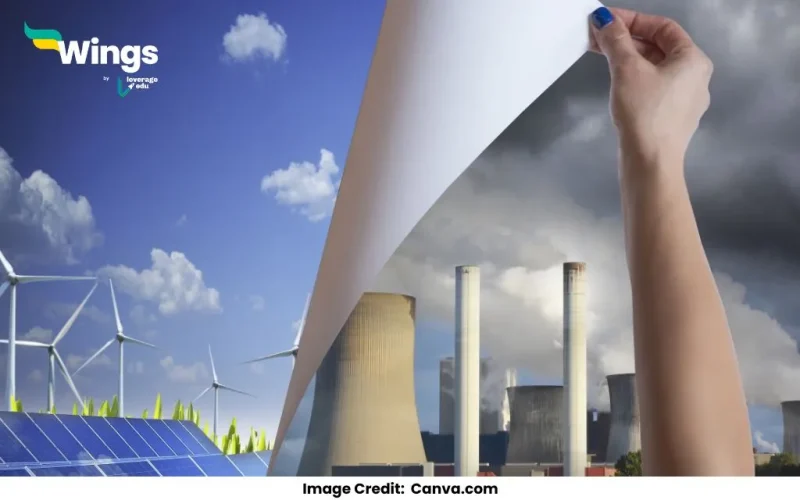Conventional energy sources include fossil fuels like coal, oil, and natural gas, which are finite, polluting, and contribute to climate change. Whereas, non-conventional sources, such as solar, wind, hydro, and geothermal, are renewable, cleaner, and environmentally friendly. They help reduce carbon emissions and offer sustainable solutions for long-term energy needs. This is how we distinguish between conventional and non-conventional sources of energy.
Complete Answer
Here is how to distinguish between conventional and non-conventional sources of energy:
| Conventional Sources of Energy | Non-Conventional Sources of Energy |
| Derived from fossil fuels like coal, oil, and natural gas. | Derived from renewable sources like solar, wind, geothermal, and biomass. |
| These sources are limited in supply and will eventually deplete over time. | These sources are unlimited in supply and sustainable for the long term. |
| These resources cause significant pollution, including air and water pollution. | These resources are eco-friendly and produce little to no pollution. |
| Burning of conventional sources contributes to global warming due to carbon emissions. | The usage of non-conventional energy sources helps combat climate change by reducing carbon emissions. |
| Procurement of fossil fuel requires extensive mining, drilling, and transportation, harming ecosystems. | Non-conventional energy is extracted from natural processes like sunlight, wind, and flowing water, minimising environmental damage. |
| Conventional sources of energy can lead to energy insecurity in some countries as most nations are dependent on imports for resources. | Non-conventional sources of energy promote energy independence by using locally available resources. |
| Expensive in the long run due to rising fuel costs and resource scarcity. | Cost-effective over time after the initial installation of infrastructure. |
| Widely used in industries, power generation, and transportation. | Increasingly used in homes, industries, and rural electrification projects. |
Future of Non-Conventional Energy or Renewable Energy in India
While analysing how to distinguish between conventional and non-conventional sources of energy, we must look at the future of renewable energy in India. India’s renewable energy future is promising, driven by ambitious targets, government initiatives, and technological advancements. Here is what the future of renewable energy in India looks like:
- Increasing Renewable Energy Capacity: India aims to achieve 500 GW of renewable energy capacity by 2030, with significant contributions from solar, wind, biomass, and hydropower sources.
- Solar Energy Leadership: With over 71 GW of installed solar capacity (2024), India is expanding solar parks, such as the 2 GW Pavagada Solar Park in Karnataka and the upcoming 5 GW Dholera Solar Park in Gujarat.
- Wind Energy Development: India is the 4th largest wind energy producer globally, with an installed capacity of 45 GW (2024). Projects like Tamil Nadu’s Muppandal Wind Farm enhance its potential.
- Green Hydrogen Initiatives: The National Green Hydrogen Mission aims to produce 5 million metric tons of green hydrogen annually by 2030, reducing fossil fuel imports.
- Biomass and Waste-to-Energy Projects: India has over 10 GW capacity from biomass energy. Projects like the Okhla Waste-to-Energy Plant in Delhi promote sustainable waste management.
- Hydropower Expansion: India has 47 GW of large hydropower capacity and plans to tap into small hydropower projects (<25 MW) to electrify remote areas.
- Favourable Policies: Policies like the Jawaharlal Nehru National Solar Mission, subsidies for rooftop solar systems, and the Renewable Energy Development Agency (IREDA) loans encourage renewable energy adoption.
- Decentralized Energy Solutions: Renewable energy is being used for rural electrification through solar microgrids and wind-solar hybrid systems, improving energy access.
- International Cooperation: India co-founded the International Solar Alliance (ISA), strengthening global partnerships for solar energy deployment.
- Upcoming Projects: India is investing in floating solar plants, such as the 600 MW Omkareshwar Floating Solar Project in Madhya Pradesh, and offshore wind farms, starting with Gujarat and Tamil Nadu.
Common Doubts:
 60,000+ students trusted us with their dreams. Take the first step today!
60,000+ students trusted us with their dreams. Take the first step today!


 One app for all your study abroad needs
One app for all your study abroad needs










